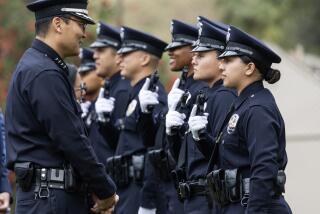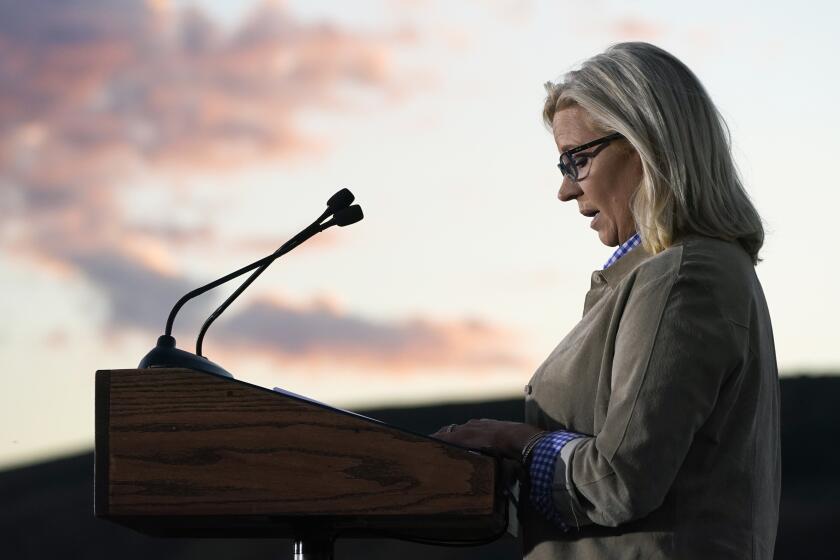Op-Ed: Rodney King’s beating provides a road map for investigating police misconduct
So, which is it? Are police officers who commit misconduct simply “bad apples” scattered among the 99% of good cops? Or is their behavior symptomatic of a deeply flawed system infected with racism and brutality?
It is possible to find the answer, and the historical example of Rodney King’s brutal beating by police provides a road map for making the determination. When a commission was established to investigate that incident, it took on a mission that went beyond simply determining what happened. It looked at the far broader culture of policing in Los Angeles, which is what needs to happen in all cases of serious misconduct.
For starters, it was important to understand the events that preceded King’s beating. On the night in 1991 that he was beaten, one of the LAPD officers involved had responded earlier to a domestic violence call involving a Black couple. He described it to a fellow officer, using the department’s official, monitored message system, as “right out of ‘Gorillas in the Mist.’”
And then there were the circumstances of the beating itself. More than a dozen officers from the Los Angeles Police Department, the California Highway Patrol and the Los Angeles School Police watched as other officers beat King into submission — a brutal attack that was overseen and directed by a police sergeant. Not one officer at the scene made any formal report of misconduct based on what they’d seen; indeed, they joked about it later.
The following year, a civilian commission under the leadership of Los Angeles lawyer — and later, Secretary of State — Warren Christopher uncovered electronic messages, again from the LAPD’s official system, using coarsely racist language. One particularly pungent piece of code: Officers’ shorthand for domestic incidents involving African Americans was “NHI,” short for “no humans involved.”
Rodney King was not beaten because an officer or two had a bad day. He was the victim of a deliberate use of force, directed by a veteran supervisor, observed by others and laughed about later. He was the victim of police misconduct, yes, but also of a debased and racist police culture.
These distinctions matter. When a Minneapolis police officer jams his knee into the neck of a Black man suspected of passing a phony $20 bill, that suggests misconduct; when three of his fellow officers stand by for more than eight minutes while the suspect pleads for help, that points to a cultural problem. When Buffalo officers knock down a 75-year-old white man for merely being in their way, that could be evidence of a couple bad apples; when the colleagues of those officers applaud them as they leave a court hearing, it suddenly looks like a cultural issue.
Let’s take something simple. When officers cover their badge numbers or black out the names on their uniforms, as has happened in cities around the country during the recent protests, that’s cultural, not individual. They should be fired, for starters, but the inquiry should not stop there. Whoever authorized or encouraged those actions also needs to come under scrutiny, along with whatever culture suggested that hiding police identities was appropriate. The leadership of their departments bears responsibility, not a few “bad apples.”
Before the problem of rogue police can be solved, it has to be characterized correctly. If the LAPD’s problem in 1991 was that Officer Laurence Powell, who delivered most of the blows to King, was an aberrant, out-of-control cop, then the solution would be to fire him or put him in jail, or both. Powell was, in fact, convicted of violating King’s civil rights and served time in prison.
But that didn’t begin to address the real issue, the one that was illustrated by the blasé reactions of bystander officers or the policing mindset that led to such vile electronic messages. The methods for addressing those alarming revelations included forcing out Police Chief Daryl F. Gates, strengthening civilian oversight, improving training and tracking complaints against police using modern technology. Together, those reforms — many implemented pursuant to a federal consent decree — bought improvements because they recognized and addressed cultural corruption. Was it enough? Not nearly. Reform has to be an ongoing process.
In Minneapolis, firing and prosecuting Officer Derek Chauvin may protect those he might have later tried to arrest, but they won’t address the question of why his fellow officers seemed untroubled by his actions or why so many complaints of police abuse in that department appear to have received little attention. In Buffalo, the bigger question is not why two officers knocked a 75-year-old man to the pavement, but why others thought that was something to cheer about.
Yes, some acts of police misconduct are nothing more than the work of a stray, misguided officer, a bad apple. But contrary to the 1970 Osmonds hit, one bad apple can spoil the whole bunch. And once a few officers in a department have started to rot, a whole new barrel is needed.
Journalist and author Jim Newton covered the LAPD for The Times from 1992 to 1997. His most recent book is “Man of Tomorrow: The Relentless Life of Jerry Brown.”
More to Read
A cure for the common opinion
Get thought-provoking perspectives with our weekly newsletter.
You may occasionally receive promotional content from the Los Angeles Times.











